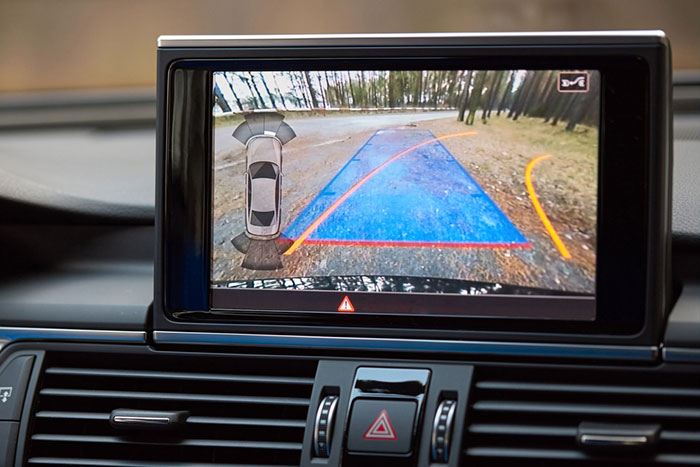Reversing cameras are an incredible innovation that play a vital role in on-road safety, and many drivers rely on them for many uses from parking and towing to safely reversing caravans and trailers. A rear-view camera that suddenly stops working can be inconvenient and dangerous. Here we will explore some of the potential reasons your car’s reversing camera isn’t functioning as it should, as well as some helpful troubleshooting solutions.
Damaged Hardware
One of the most common reasons for receiving blurry images or for a rear vision camera to stop working completely is related to hardware damage. If the lens, stabilizer, or any other component is broken, then you will experience problems.
Dirty Lens
If the reversing camera’s lens is dirty, muddy, or has accumulated dust, or water then this can result in a blurry image.
Loose Connections
If the wires that are connecting your reversing camera with the screen are loose or broken, then your image may be distorted, or the screen might even be completely blank.
Other Issues
Besides the above, rear vision cameras can also malfunction or stop working due to a number of other issues including software-related problems, a power failure, or condensation. If you’re having trouble with reversing cameras from Safety Dave and need expert advice, you can call us on 1800 072 338.
Troubleshooting Solutions
Now you know some of the possible causes of a malfunctioning rear-vision camera, there’s a few different solutions that can be applied to restore it back to proper working order.
Check for any exterior damage – Inspect the camera lens for any noticeable signs of wear. You may even need to dismount it from your vehicle. If you can see that it is damaged or broken in any way, you should seek professional assistance to have it repaired.
Clean the lens – The lens could be covered in dirt, dust, mud, water, or even fog, so try cleaning the lens with a soft microfibre cloth. For built-up grime, you can purchase a lens cleansing solution which will help to remove anything that can disrupt its view.
Watch out for condensation – Most reversing cameras are sophisticated devices and can be vulnerable to water. If there is a lot of condensation in your vehicle, this can damage your reversing camera as water can make its way inside the electrical system. Regulate the airflow in your car in particularly humid conditions.
Fix loose connections – While the reversing camera is positioned at the back of the car, it is connected to the screen on your dashboard. Sometimes connections can come loose, or they can even be faulty. Run a complete diagnostic check by making sure that all the connections are in place and appropriately tightened.
Check the instruction manual – Every high-quality rear vision camera will come with a detailed user guide. This should include a variety of troubleshooting options you can try in various situations. If you are certain there is no damage, dirt, or loose connections, the manual may be able to advise some other tips to try. The manual will also advise the warranty period for your camera, and if it is still under warranty you may be able to have your camera checked and repaired free of charge.
Need More Advice?
Safety Dave is Australia’s leading supplier of premium safety equipment including reversing cameras, TPMS, AEDs, and fire safety products. Our knowledgeable team are here to answer any questions you may have about our products or help with any problems you are facing. Whether your rear-vision camera kit isn’t working as it should or you’re looking for the best defibrillator for sale, reach out to us online or call us today on 1800 072 338.


